Vaping in toilets is escalating across UK schools, offices, and public spaces. In 2025, reports indicate a sharp rise in covert incidents, posing serious health and safety risks. Growing concern surrounds the challenge to detect vaping in toilets before it harms vulnerable users or damages facilities.
This article delivers a clear, step-by-step guide to help you detect vaping in toilets using the latest technology and methods. You will learn about current vaping trends, related health and legal issues, proven detection tools, and effective strategies for ongoing monitoring. Take action now to protect your environment with practical, expert-backed solutions.
Understanding the Vaping Problem in Toilets
Vaping in toilets is becoming a significant challenge for schools, offices, and public facilities across the UK. As these environments strive to maintain healthy, compliant, and safe spaces, the need to detect vaping in toilets has never been more urgent. Understanding the scale of the problem, its risks, and the warning signs is critical for those responsible for maintaining these facilities.
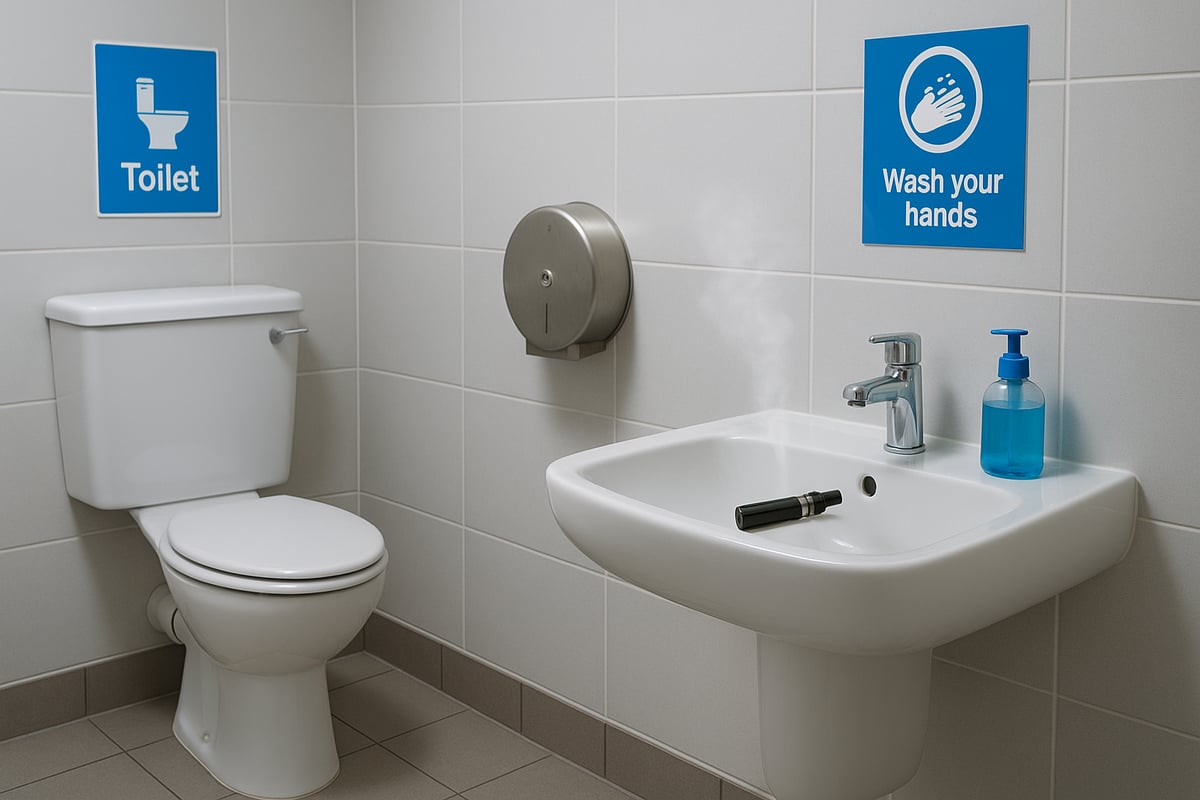
The Rise of Vaping in Restricted Spaces
Over the past year, incidents of vaping in toilets have surged, particularly in UK schools and workplaces. Reports highlight a 36 percent increase in covert vaping among teenagers in 2024. This trend is not limited to young people. Employees and public users are also turning to toilets as discreet spaces to vape.
Popular hotspots include school toilets during breaks, office restrooms after meetings, and public facility washrooms in transport hubs. Vape users employ clever concealment tactics, such as exhaling vapour into sleeves or flushing toilets to mask sounds and smells. According to the ASH Youth Vaping Survey 2025, these patterns are becoming alarmingly common, making it vital to detect vaping in toilets promptly.
Health and Safety Risks
The health implications of vaping in toilets are often underestimated. In confined spaces, secondhand vapour can linger, exposing others to nicotine and chemical residues. This is particularly concerning for children, asthmatics, and those with respiratory issues.
Discarded vape devices and lithium batteries present fire risks, especially when left near paper products or in bins. Facilities must recognise these dangers and act to detect vaping in toilets, safeguarding all users from unnecessary harm. Addressing these risks helps maintain a safe, healthy environment for everyone.
Policy and Legal Considerations
UK legislation has tightened, with the 2025 update banning vaping in all indoor public spaces, including toilets. Schools and employers are required to enforce strict no-vaping policies, often with clear disciplinary actions for breaches.
Facility managers have a legal duty to uphold these rules and protect users. Failure to detect vaping in toilets can result in non-compliance, legal ramifications, and increased scrutiny from regulatory bodies. Staying informed about policy changes is essential for maintaining lawful and responsible operations.
The Cost of Ignoring the Issue
Ignoring the need to detect vaping in toilets can be costly. Facilities face higher cleaning expenses due to sticky vape residue and lingering odours. For example, schools have reported a 20 percent rise in cleaning costs directly linked to vaping incidents.
Beyond maintenance, there is a risk of reputational damage if environments are perceived as unsafe or poorly managed. Legal action may follow if vulnerable groups are affected. Proactive detection and intervention are crucial to avoid both financial and reputational setbacks.
Identifying Patterns and Warning Signs
Recognising the signs of vaping in toilets is the first step towards effective intervention. Common indicators include lingering sweet or fruity smells, visible vapour clouds, and smoke alarms that appear tampered with or covered.
Behavioural cues are equally telling. Frequent bathroom visits, loitering, and small group gatherings during unusual times can signal vaping activity. Early efforts to detect vaping in toilets prevent escalation, supporting a safer and more compliant facility.
Step-by-Step Guide to Detect Vaping in Toilets
Effectively addressing the need to detect vaping in toilets requires a systematic approach. By following these practical steps, facility managers, educators, and business leaders can create cleaner and safer environments. Each step below is designed to build on the last, moving from assessment through to ongoing education.
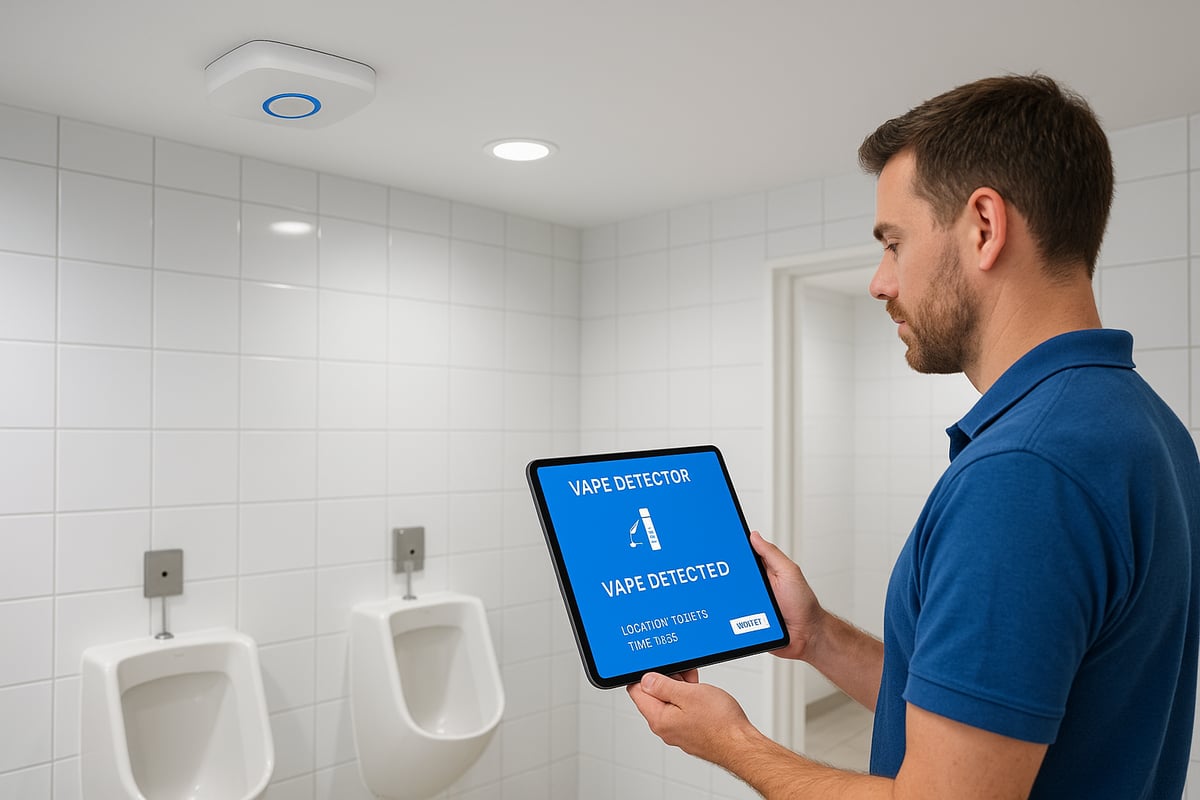
Step 1: Assess the Environment
Begin your journey to detect vaping in toilets by thoroughly evaluating your environment. Identify high-risk areas by reviewing incident reports and usage logs. Toilets near communal spaces, entrances, or secluded corridors often become hotspots.
Map out each toilet’s layout, marking possible blind spots where individuals may attempt to vape discreetly. Consult with staff and facility users to gather insights on suspected problem zones. Their frontline experience can highlight patterns that data alone may miss.
Key actions include:
- Conducting walkthroughs during different times of day
- Reviewing maintenance and cleaning records for signs of vaping
- Noting areas with frequent odours or tampered fixtures
Early and careful assessment sets the stage for targeted interventions to detect vaping in toilets.
Step 2: Choose the Right Detection Technology
Selecting the optimal tools is essential if you want to detect vaping in toilets accurately. Today’s vape detection sensors are engineered to sense nicotine, THC, and even synthetic cannabinoids. The best devices combine air quality monitoring, particulate sensors, and sometimes sound detection for comprehensive coverage.
Here is a comparison of common sensor types:
| Sensor Type | Detects | Pros | Cons |
|---|---|---|---|
| Air Quality Monitor | Vapour, odours | Wide coverage, easy install | May trigger false alarms |
| Particulate Sensor | Aerosols, smoke | High sensitivity | Needs precise placement |
| Noise Sensor | Sound patterns | Adds context to alerts | Limited on its own |
Modern systems offer real-time alerts and seamless integration with facility management software. Some UK schools have adopted AI-powered detectors boasting up to 96 percent accuracy, which has proven transformative.
For an in-depth look at evidence and best practices, see Do vape detectors work in bathrooms. This resource offers valuable guidance for anyone aiming to detect vaping in toilets with confidence.
Step 3: Install and Configure Detectors
Proper installation is critical to reliably detect vaping in toilets. Position detectors in ceiling corners to maximise coverage and keep them away from direct water sources or vents, which could impair their effectiveness.
Installation tips:
- Place sensors at least two metres above floor level for optimal vapour detection
- Ensure detectors are both discreet and visible enough to act as a deterrent
- Avoid installing near hand dryers or windows to reduce false positives
Configuration is just as important. Calibrate sensitivity and alert thresholds to match your facility’s needs. Overly sensitive devices may produce nuisance alarms, while low sensitivity risks missed incidents. Real-world case studies have shown a 94 percent reduction in vaping incidents when detectors are installed and configured correctly, highlighting the importance of this step to detect vaping in toilets.
Step 4: Set Up Real-Time Alerts and Response Protocols
The next step to detect vaping in toilets is establishing a robust alert and response system. Connect your detectors to mobile apps, email notifications, or on-site alarms for immediate response.
Define clear protocols:
- Assign response teams for each shift
- Set escalation procedures for repeated incidents
- Provide privacy-focused training for staff
Staff should understand how to interpret alerts and manage incidents discreetly. Privacy considerations are paramount, especially in toilets, so ensure that protocols comply with relevant laws and respect individual rights. Effective response processes reinforce the reliability of systems put in place to detect vaping in toilets.
Step 5: Monitor, Review, and Optimise
Continuous improvement is vital if you want to detect vaping in toilets consistently. Monitor incident data for trends, such as repeat offenders or peak usage times, and adjust your detection parameters accordingly.
Key actions include:
- Analysing detection logs weekly
- Soliciting feedback from cleaning and security staff
- Scheduling regular maintenance and firmware updates
By periodically reviewing your approach, you ensure that your systems remain effective as vaping devices and user behaviours evolve. This ongoing vigilance is crucial to maintain your ability to detect vaping in toilets and respond effectively.
Step 6: Educate and Engage Users
The final step to detect vaping in toilets successfully is user engagement. Launch targeted awareness campaigns for students, staff, or the public, explaining the health risks and facility policies on vaping.
Use visible signage to inform users about detection technology and potential consequences of vaping in toilets. Encourage a culture of reporting, where users feel empowered to share concerns without fear of reprisal.
Education, transparency, and engagement foster an environment where compliance becomes the norm, reducing the need for constant enforcement and making it easier to detect vaping in toilets in the long term.
Integrating Advanced Vape Detection Solutions
Advanced technology is transforming the way facilities detect vaping in toilets, offering more effective and reliable solutions than ever before. By leveraging artificial intelligence, smart sensors, and real-time analytics, organisations can stay one step ahead of the growing vaping challenge. This section explores the key innovations and practical steps for integrating these advanced systems, ensuring both compliance and privacy throughout the process.
The Role of AI and Smart Sensors
Artificial intelligence is at the core of the latest systems used to detect vaping in toilets. AI-powered sensors analyse air quality, particulate levels, and even sound patterns to distinguish vape emissions from other substances. These devices can identify specific compounds like nicotine, THC, and synthetic cannabinoids, reducing false alarms that often occur with traditional smoke detectors.
Multi-sensor devices go beyond simple detection. They integrate air quality monitoring with occupancy and noise sensors, providing a holistic view of activity within toilets. This approach helps facilities detect vaping in toilets with remarkable accuracy, ensuring incidents are caught early and staff can respond swiftly.
Data-Driven Decision Making
Analytics from modern detection systems play a vital role in shaping effective anti-vaping strategies. Facilities collect real-time data on when and where incidents occur, allowing for targeted interventions and resource allocation. Weekly reports and incident logs help managers spot patterns, identify repeat offenders, and adapt policies as vaping trends evolve.
By using this data, organisations can detect vaping in toilets more efficiently, reducing guesswork and focusing efforts where they are needed most. This data-driven approach supports continuous improvement and fosters a proactive culture of compliance.
Vape Guardian: Leading Vape Detection Technology
When it comes to choosing a system to detect vaping in toilets, Vape Guardian stands out as a trusted UK-designed solution. Their sensors achieve a 96 percent alert accuracy and provide instant notifications through easy-to-use mobile apps. Facilities can track incidents in real time, streamline response protocols, and measure success with clear analytics.
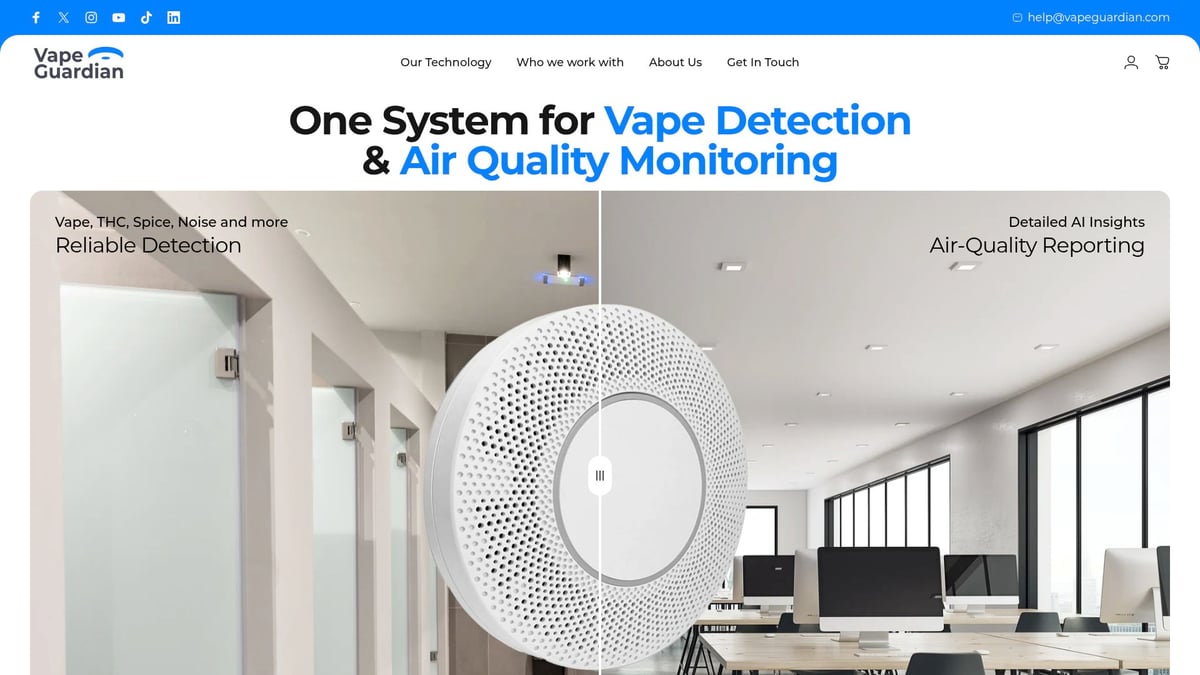
For those seeking more insight into the specific challenges and solutions for bathrooms and toilets, the Vape detection for bathrooms article offers valuable perspectives. Vape Guardian’s proven track record includes a 94 percent reduction in vaping incidents within just five weeks, supported by UK-based service and safeguarding resources.
Ensuring Compliance and Privacy
Integrating advanced systems to detect vaping in toilets must be balanced with the privacy rights of users. Facilities should communicate openly about the technology in use, explaining how data is collected and protected. Transparent signage and regular updates build trust and ensure everyone understands their rights and responsibilities.
Strict adherence to GDPR and other legal frameworks is essential. By prioritising privacy, organisations can detect vaping in toilets effectively while respecting the dignity of all users and maintaining legal compliance.
Case Study: Successful Implementation
A secondary school in London recently installed a network of AI-driven sensors to detect vaping in toilets. Within a month, vaping incidents dropped by more than 90 percent. Staff reported quicker response times, and students acknowledged the visible presence of detectors as a strong deterrent. This real-world success demonstrates the power of advanced solutions to create safer, healthier environments for everyone.
Best Practices and Ongoing Strategies for Vaping Prevention
Maintaining a proactive approach is essential to successfully detect vaping in toilets and prevent recurring incidents. Facilities that prioritise continuous improvement and community engagement see the most sustained results. By combining technology, policy, and human support, you can create an environment that discourages vaping and supports healthier choices.
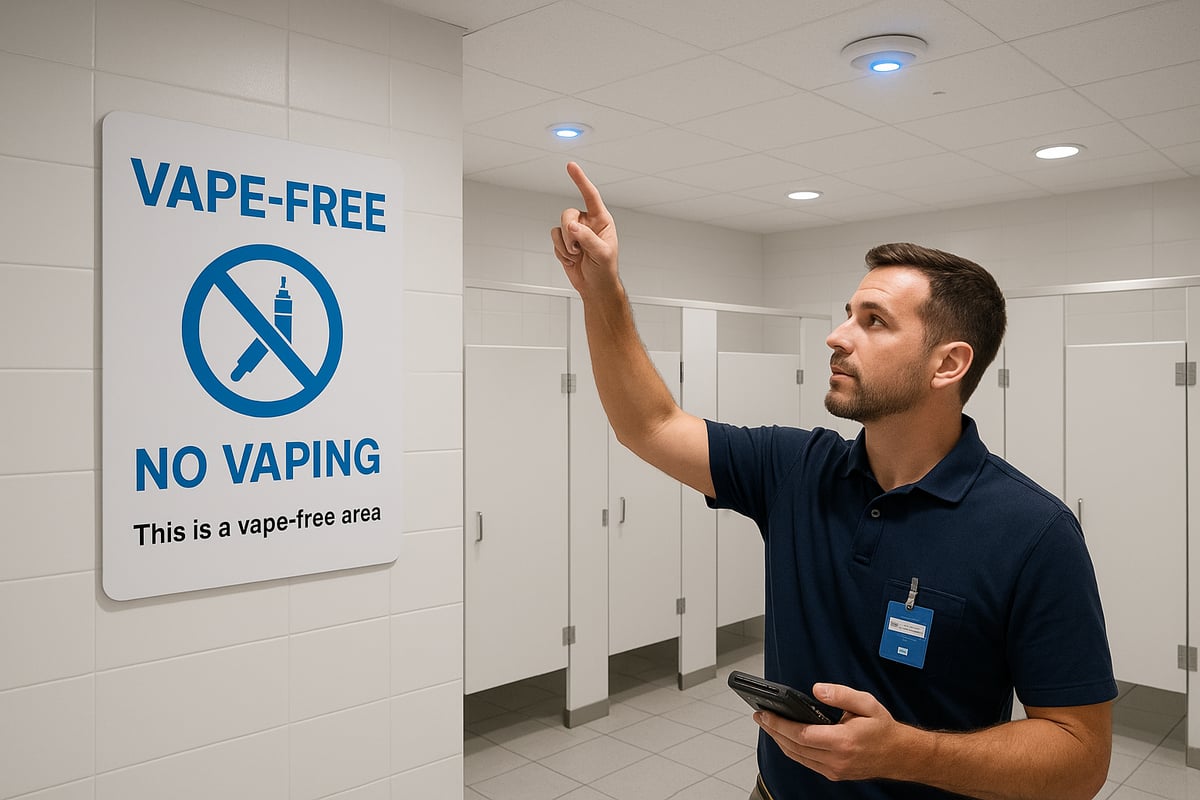
Regular System Audits and Updates
To effectively detect vaping in toilets, regular system audits are a non-negotiable best practice. Detection technology is only as reliable as its most recent update. Schedule routine checks to ensure all sensors are operational and firmware is current. This is crucial as vaping devices continually evolve, often designed to outsmart older detection systems.
Stay informed about the latest advancements by consulting resources like Vape detection technology explained, which details how sensors adapt to new vaping tactics. Address any blind spots or malfunctioning equipment promptly to maintain system integrity.
Staff Training and Empowerment
Your staff are the frontline in efforts to detect vaping in toilets. Provide ongoing training sessions covering both the technical aspects of detection and sensitive incident response. Equip them with clear protocols for what to do when an alert is triggered.
Empower staff to recognise behavioural cues and respond with empathy. This approach not only improves incident management but also builds trust within your community. Regular refreshers ensure everyone remains confident and up to date in their responsibilities.
Community Engagement and Support
Engaging the wider community is vital if you want to detect vaping in toilets and prevent future incidents. Collaborate with parents, local authorities, and health professionals to share information and resources.
Offer support programmes for individuals who wish to quit vaping, making it easier for them to seek help without fear of punishment. Host awareness sessions or distribute educational materials to reinforce the risks and consequences of vaping, especially in shared spaces.
Policy Enhancement and Enforcement
Strong policies are the backbone of any strategy to detect vaping in toilets. Regularly review and update facility policies based on incident trends and feedback. Ensure that rules are clear, consistently enforced, and communicated to all users.
Refer to practical guidance such as Vaping school policies and solutions for effective policy models. Ensure disciplinary measures are fair and focus on prevention as much as on enforcement. Transparent policies foster accountability and reduce repeat offences.
Measuring Success and Reporting Outcomes
Monitoring the effectiveness of your efforts to detect vaping in toilets is crucial. Establish key performance indicators (KPIs) such as reduction in incidents, response times, and user feedback. Use these metrics to refine your approach and celebrate progress.
| KPI | Target | Actual |
|---|---|---|
| Incident reduction rate | 90% decrease | 94% achieved |
| Average response time | Under 3 mins | 2.5 mins |
| Positive user feedback | 85%+ | 88% |
Share results with stakeholders to demonstrate commitment and build trust. Regular reporting ensures everyone stays informed and motivated to maintain a vape-free environment.
Future Trends in Vaping Detection and Prevention
The landscape for those aiming to detect vaping in toilets is rapidly changing. As vaping technology evolves, so must the strategies and tools used by facility managers and policy makers. Staying ahead means understanding both cutting-edge detection methods and the shifting behaviours of users. Below, we explore the future of vaping detection and prevention in three key areas.
Emerging Technologies
As the need to detect vaping in toilets grows, next-generation detection solutions are transforming the field. The latest systems integrate seamlessly with building management platforms, using Internet of Things connectivity and artificial intelligence to monitor multiple substances at once. These advanced sensors can distinguish between nicotine, THC, and synthetic cannabinoids, providing a detailed profile of air quality in real time.
AI-driven algorithms enhance accuracy by learning from incident data, reducing false alerts, and adapting to new vaping products. Regulatory changes, such as those detailed in the Tobacco and Vapes Bill 2025, are also prompting manufacturers to innovate detection methods that meet stricter compliance standards. Facilities benefit from improved reliability and rapid response, ensuring a safer environment for all users.
Evolving Vaping Devices and User Behaviours
The challenge to detect vaping in toilets is compounded by the rise of discreet, odourless vaping devices. In 2024, trends show users shifting towards compact gadgets that mimic everyday items, making detection harder. New concealment tactics are emerging, including hiding devices in clothing or personal belongings and timing usage to avoid supervision.
Recent Vaping Statistics 2024 reveal a surge in popularity of pod-based and disposable vapes among younger demographics. This data highlights the importance of staying alert to changing user behaviours and adapting detection strategies accordingly. Facility managers must remain vigilant, as the methods used to bypass controls are becoming increasingly sophisticated.
The Road Ahead for Facilities
To effectively detect vaping in toilets, proactive adaptation is essential. Facilities should invest in ongoing staff training, regular system updates, and continuous user education. Creating a culture of awareness and accountability is key to long-term success.
The future will likely see even greater collaboration between technology providers, regulatory bodies, and community stakeholders. By embracing continuous improvement and sharing best practices, facilities can maintain a robust defence against vaping-related risks. Ultimately, the goal is not just to catch incidents, but to foster healthier, safer spaces for everyone.
Now that you understand the latest challenges and practical steps for detecting vaping in toilets, it is clear that having the right technology and support makes all the difference. Whether you are managing a school, office, or public facility, safeguarding your environment from vaping, drug use, and anti social behaviour is essential for everyone’s wellbeing. If you are ready to take proactive measures and want expert advice tailored to your needs, I encourage you to talk to our team and protect your building today. Together, we can create safer spaces for everyone.


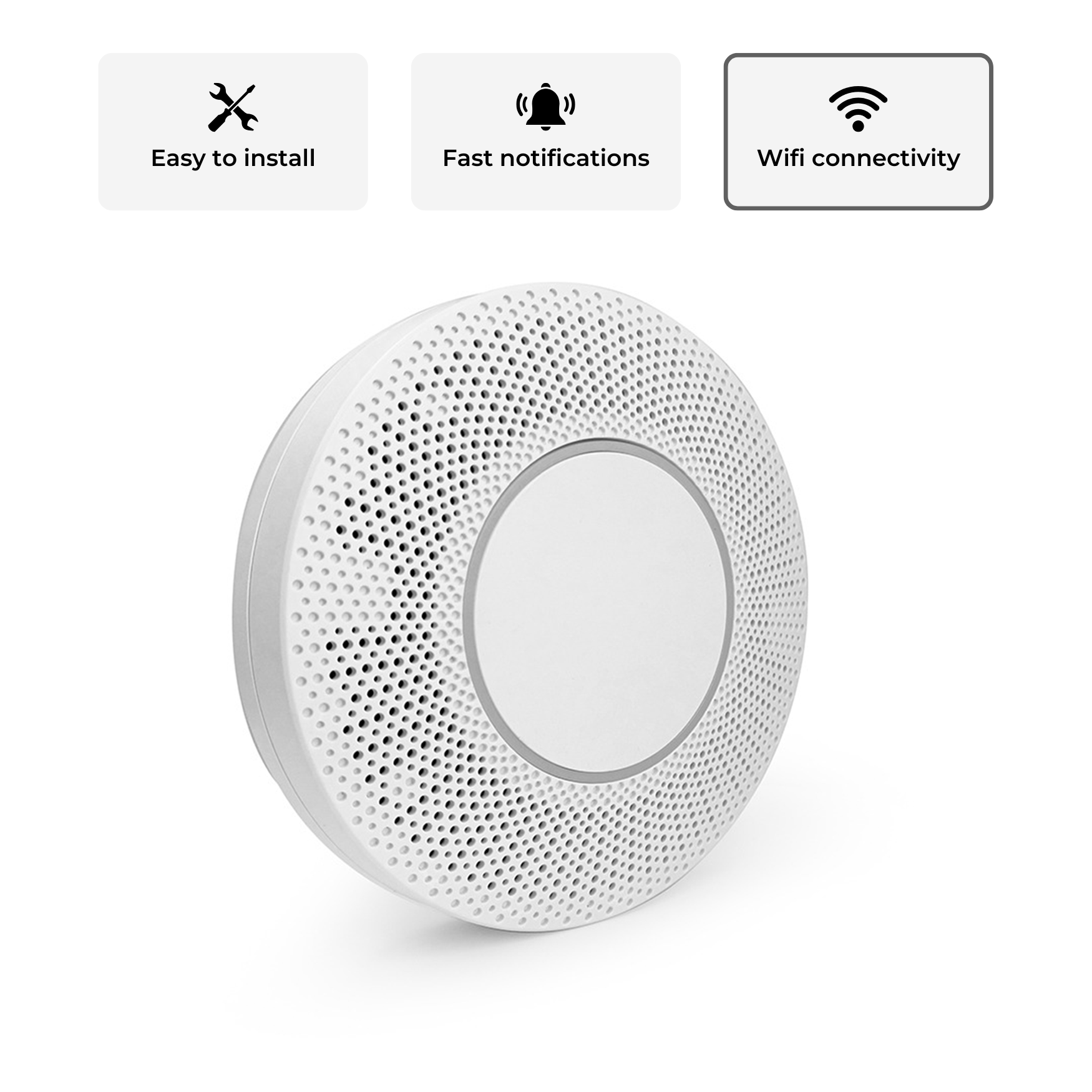
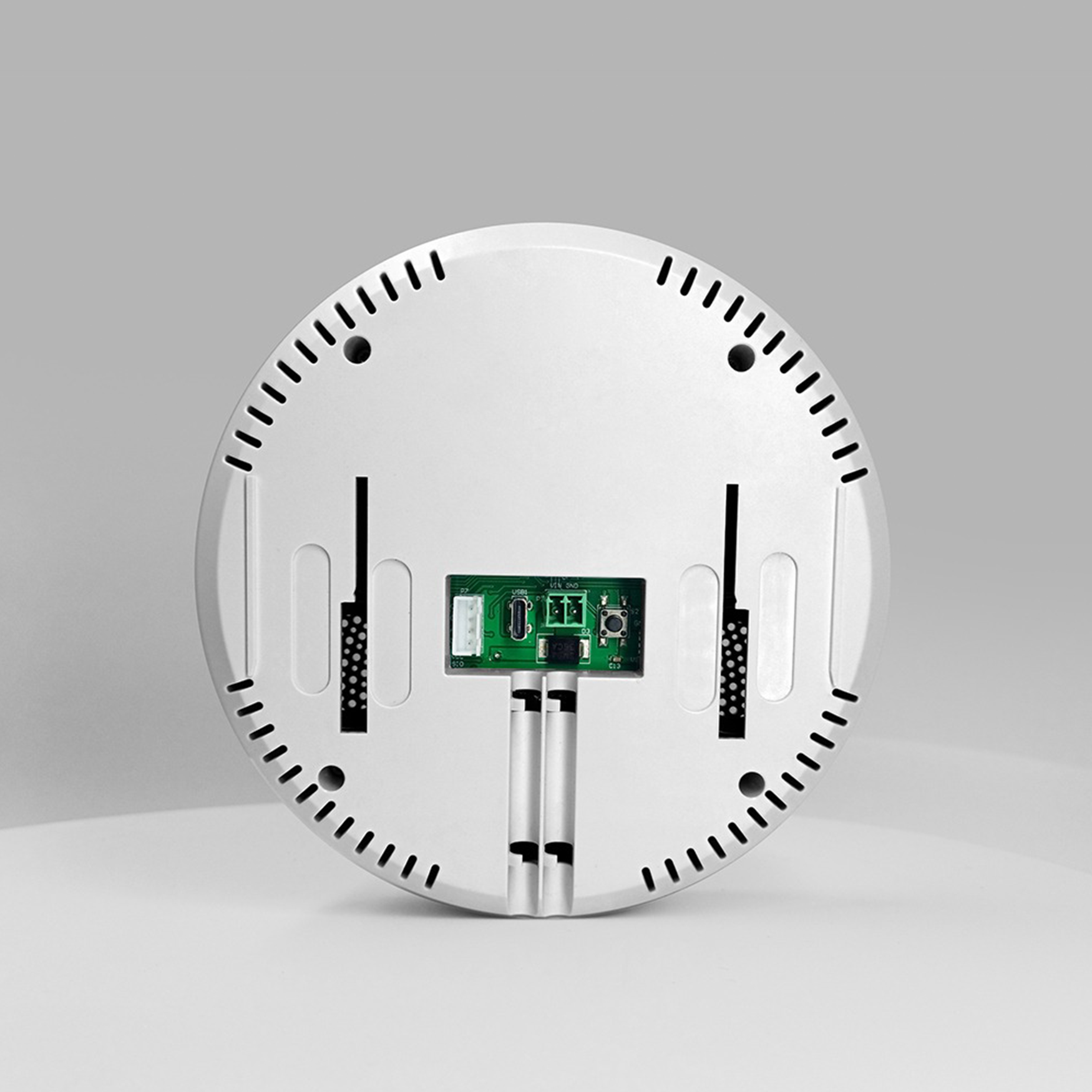

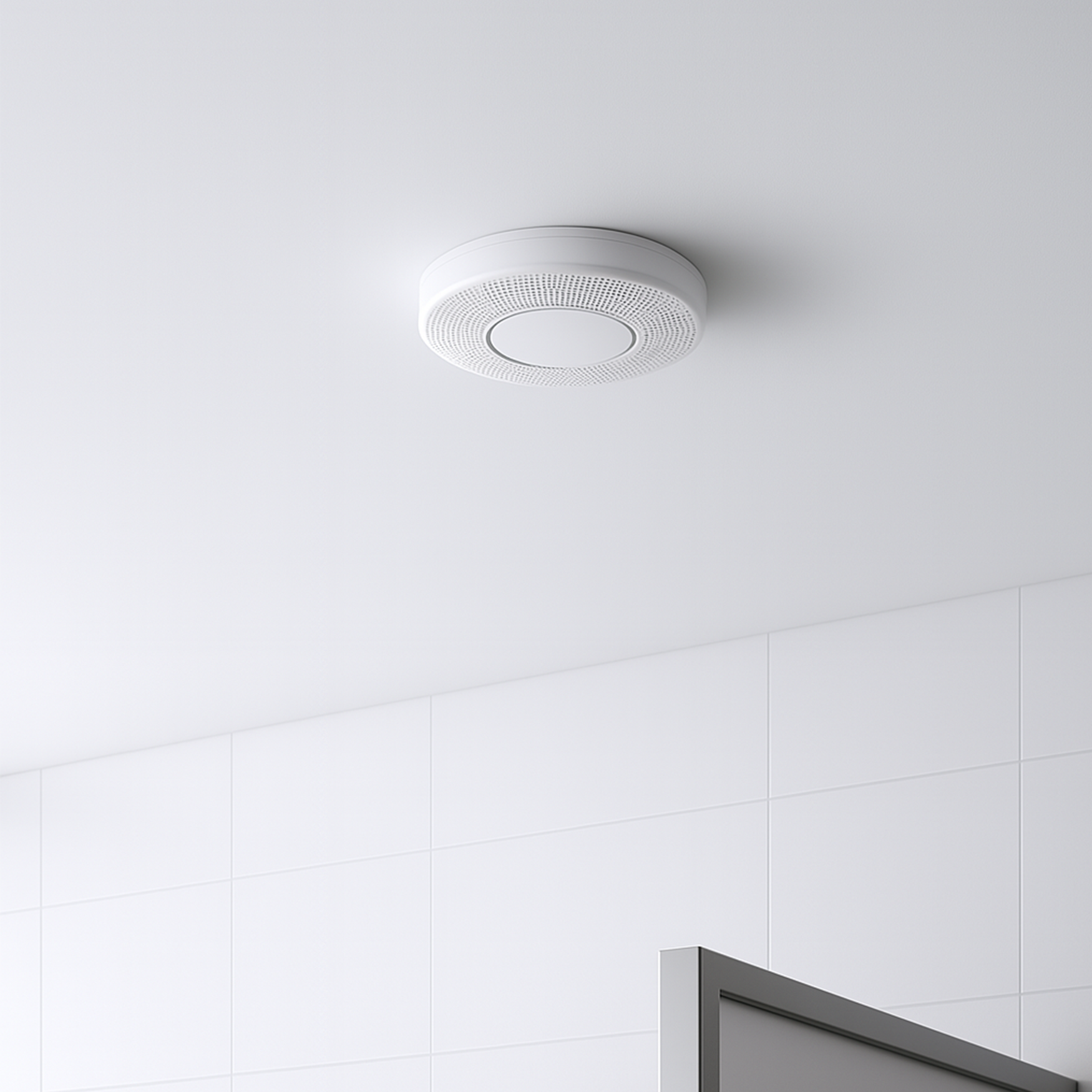
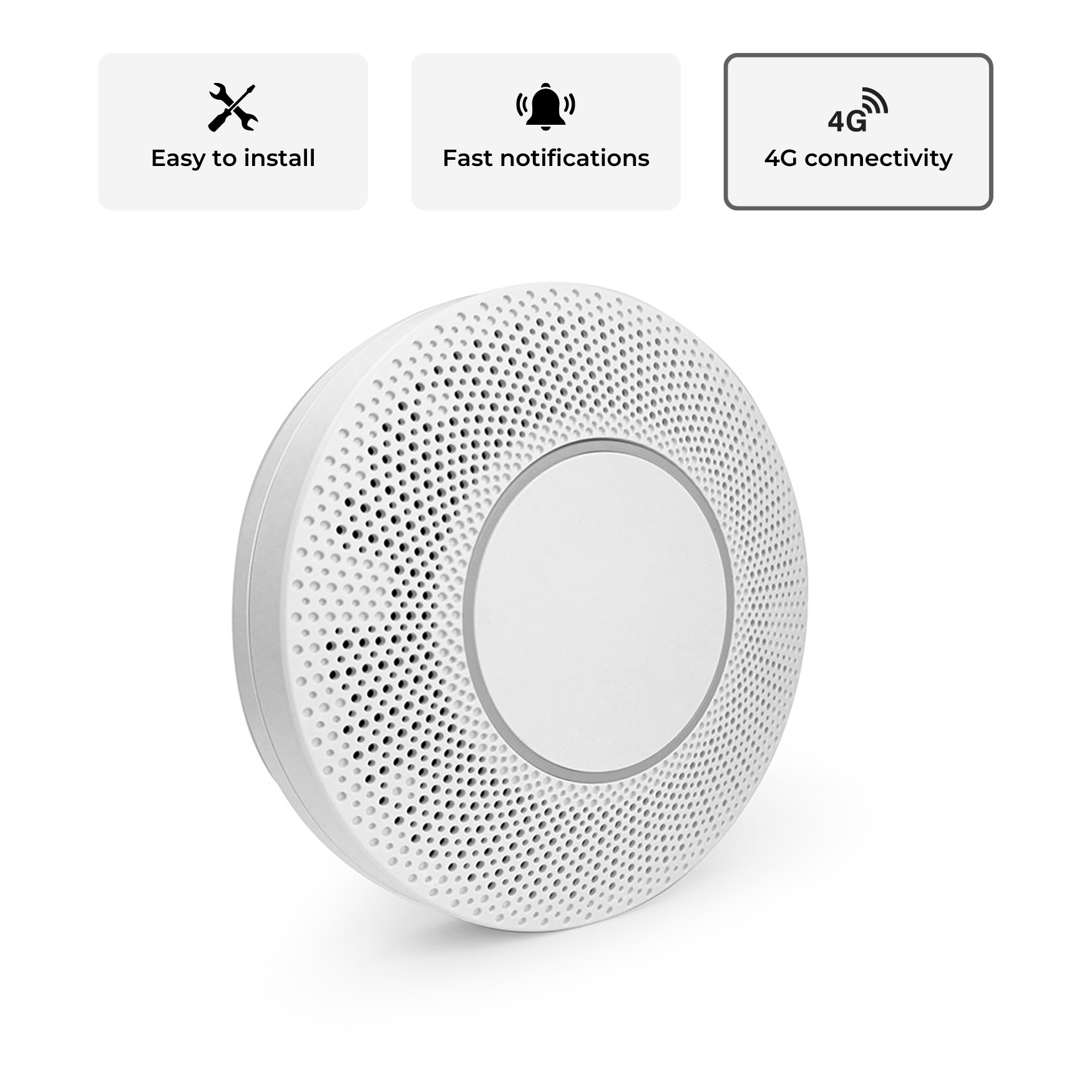

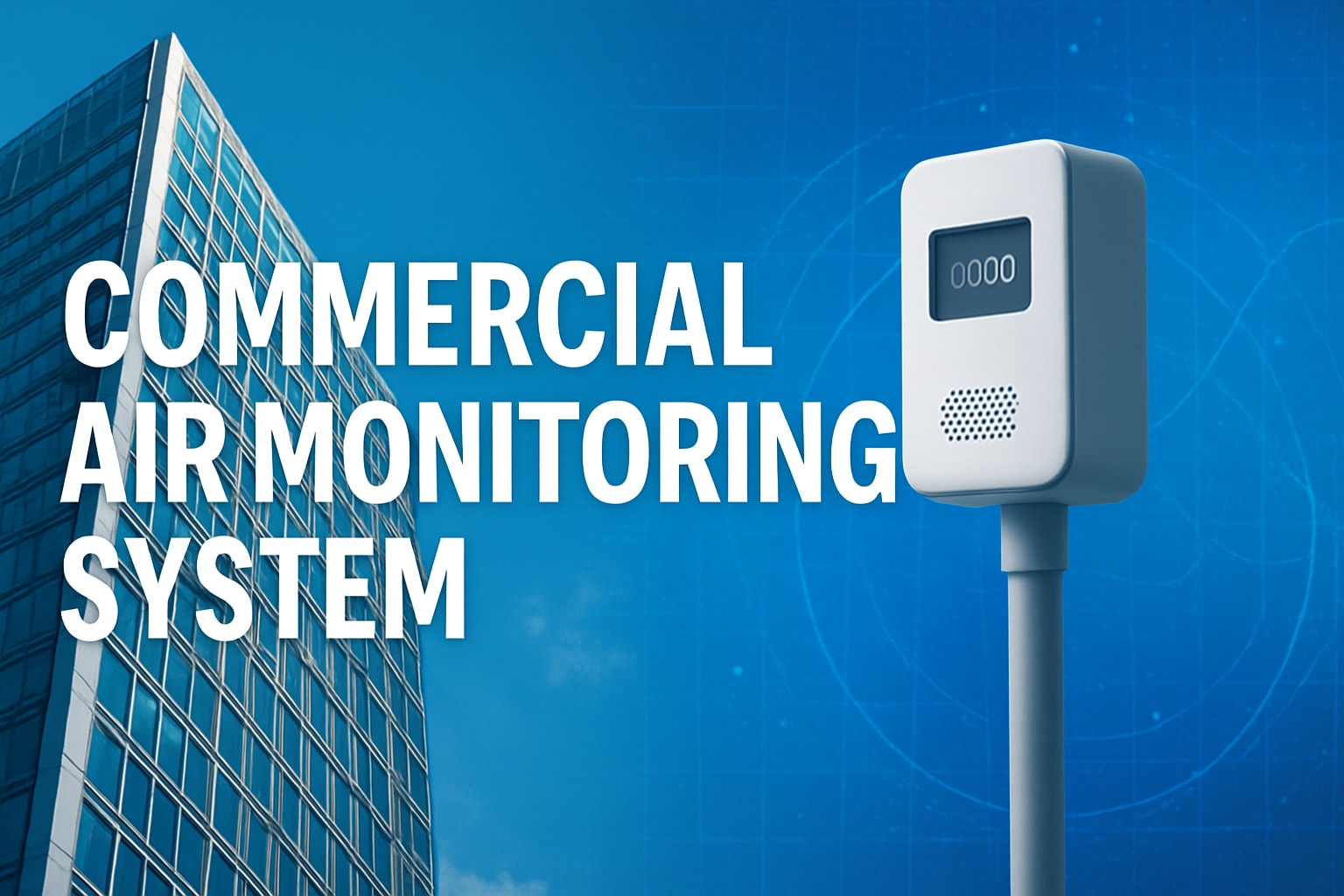


Share:
School Vape Policy Solution: The Complete Guide for 2025
Office Air Quality Monitoring: The Essential Guide 2025